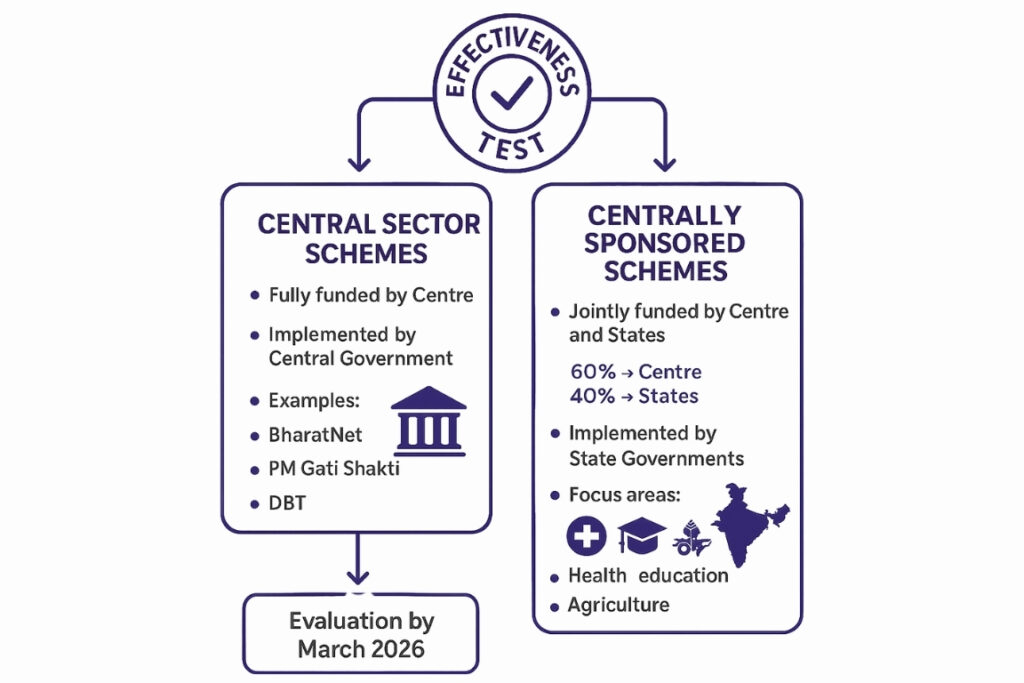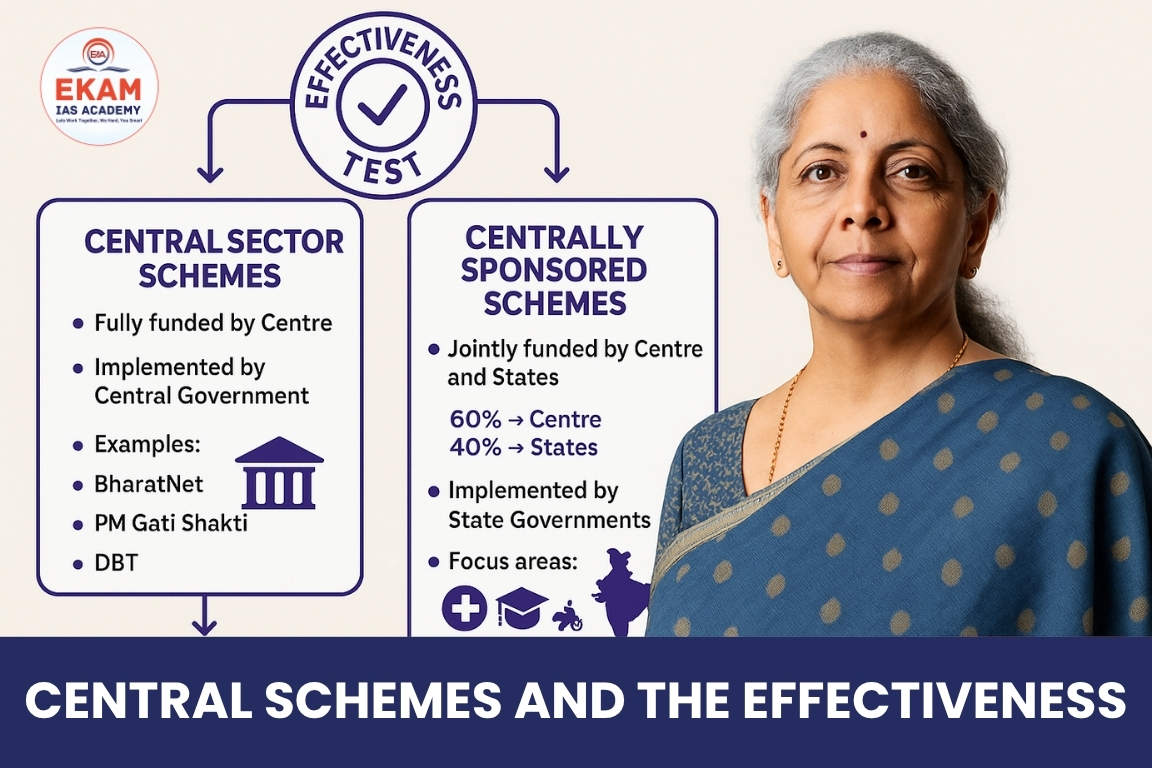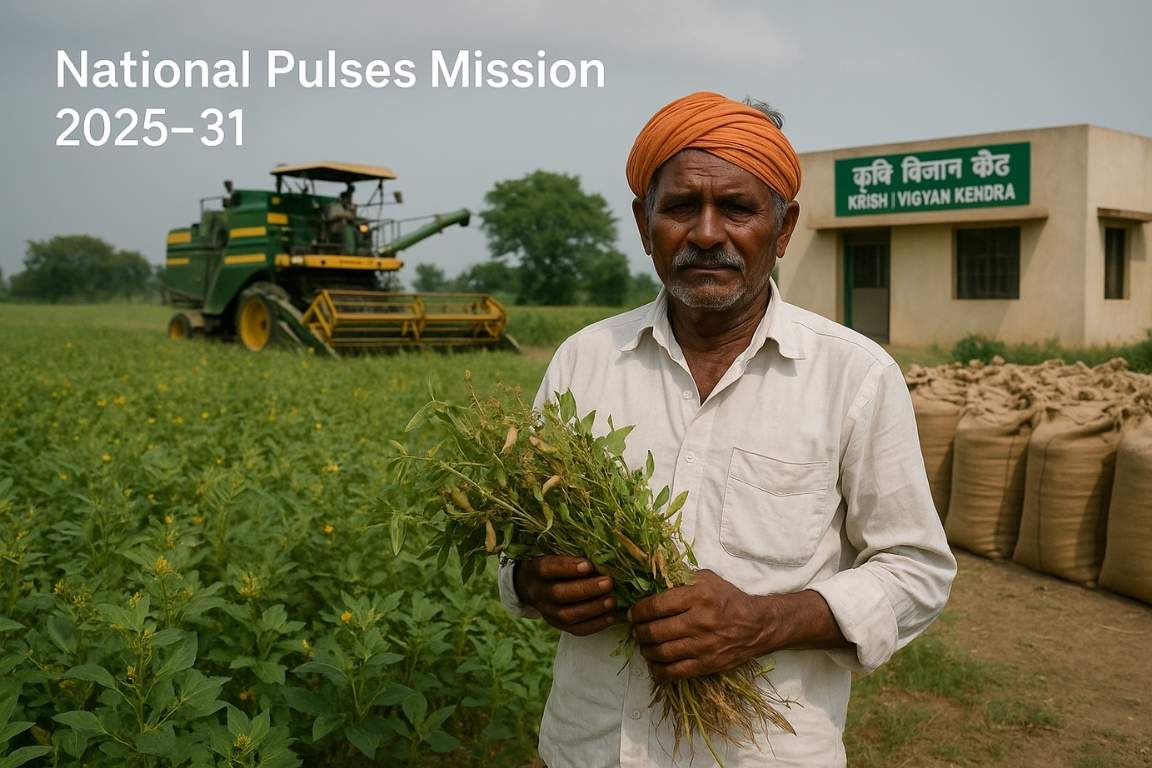The Finance Ministry has stated that all Central government-funded schemes must pass an “effectiveness” test to continue beyond March 2026. This is part of a plan to improve efficiency, reduce financial burden, and ensure schemes achieve their goals.
Background of the Issue:
- The Union government funds 54 Central schemes and 260 Centrally sponsored schemes.
- The Finance Ministry has asked that schemes must only continue if their performance reports show positive results.
- A circular dated June 6 mandates that each scheme should have a ‘sunset date’, i.e., a clearly defined end date unless re-evaluated.

New Guidelines for Schemes:
- Schemes must prove that they are effective in meeting their goals and deserve to be scaled up or continued.
- Evaluations will be done by March 31, 2026, and schemes will require fresh Cabinet approval.
- Applies to sectors like health, education, agriculture, water, and more.
- Schemes will now operate with fixed fund limits, meaning fund usage must stay within pre-approved levels.
Financial Control Measures:
- The Finance Ministry aims to limit the growth of public expenditure, especially for schemes with rising costs.
- Even demand-driven schemes like MGNREGS will face restrictions.
- Ministries must now justify extra funding and suggest cuts in other schemes if extra funds are requested.
Centrally Sponsored Schemes (CSS):
- These schemes are jointly funded by the Central and State Governments.
- The fund-sharing ratio is typically 60:40 for general states and 90:10 for North-Eastern and Himalayan states.
- They are implemented by the State Governments, though the framework and guidelines are set by the Central Government.
- CSSs are meant for areas under the State List or Concurrent List, such as health, education, agriculture, and rural development.
- The objective is to ensure nationwide uniformity in development efforts, while giving States the flexibility to adapt to local needs.
- Some well-known examples include MGNREGS, PM Awas Yojana (Gramin), National Health Mission, and Samagra Shiksha Abhiyan.
- These schemes require periodic evaluation and performance-based continuation, as recently emphasized by the Finance Ministry.
Central Sector Schemes:
- These schemes are fully funded by the Central Government.
- They are also directly implemented by the Central Government, through its ministries or central agencies.
- Central Sector Schemes typically target Union List subjects such as defence, space, atomic energy, or national-level priorities like infrastructure and research.
- States have minimal role in their execution.
- Examples include BharatNet, PM Gati Shakti, INSPIRE Scholarship, and Direct Benefit Transfer (DBT) schemes.
Conclusion
This move intends to make government spending more accountable. Demand-driven schemes must now also meet performance benchmarks and cost limits to continue receiving support.





